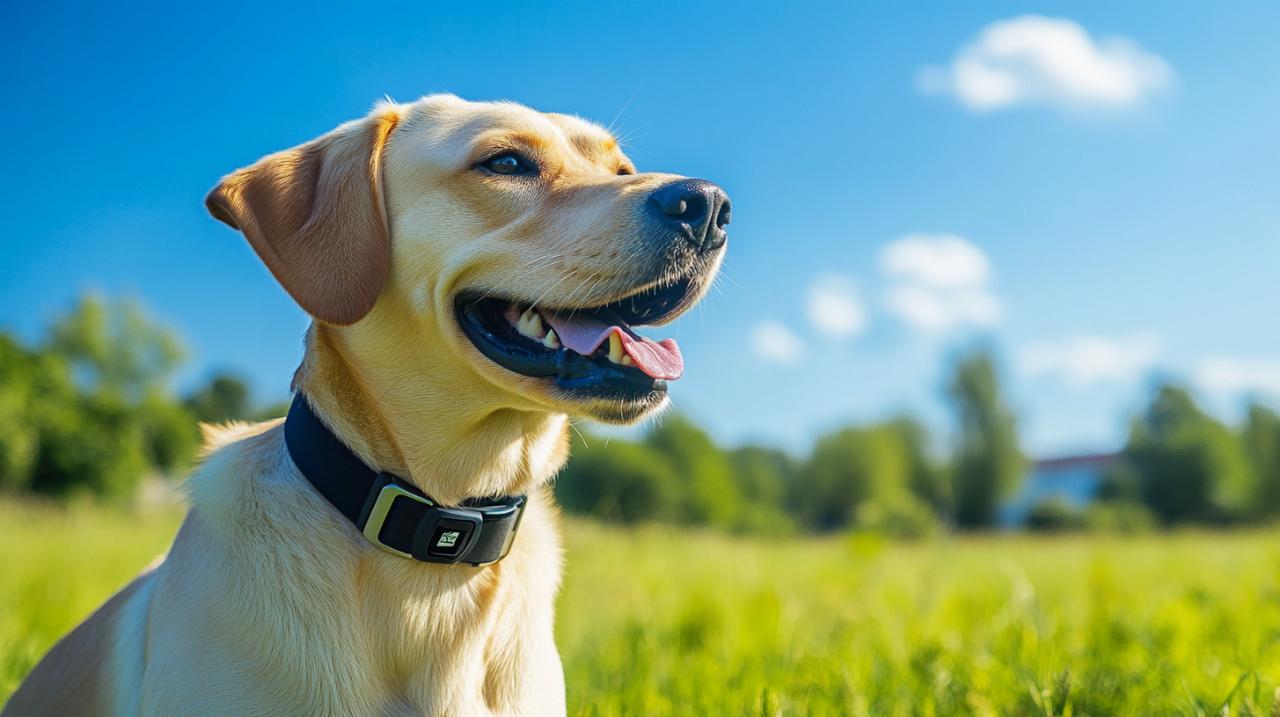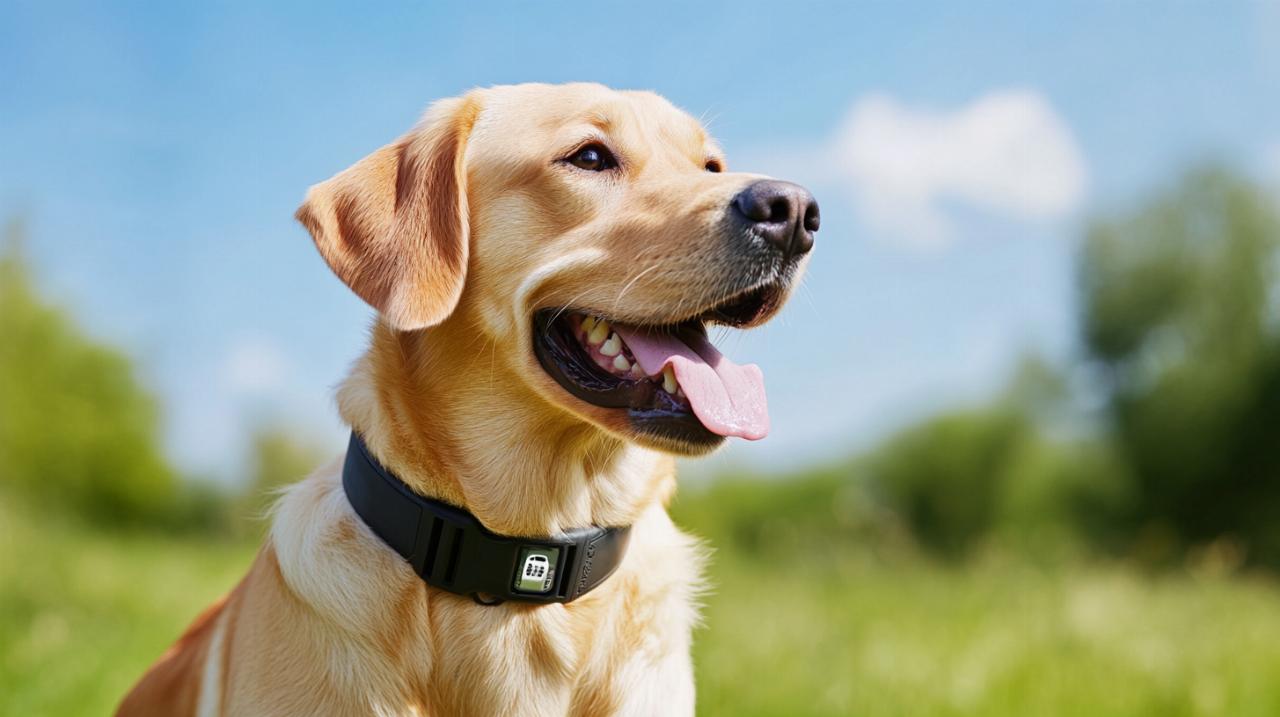If you've ever felt that pang of worry when your dog wanders off at the park or slips through an open gate, a GPS collar might just be the peace of mind you're searching for. With a vast array of models now on the market, selecting the right one involves balancing safety, comfort, and practicality. This guide walks you through the key factors to consider so you can make an informed choice that suits both you and your four-legged friend.
Understanding your dog's size and breed requirements
Before clicking 'buy' on any GPS collar, it's crucial to think about your dog's unique physical characteristics. A collar that works brilliantly for a Labrador might be far too bulky for a Chihuahua. Size, weight, and build all matter when it comes to comfort and functionality. Dogs come in all shapes and sizes, and the collar should reflect that diversity.
Matching collar weight to your dog's build
A heavy device strapped to a small dog's neck can cause discomfort or even strain, especially during long walks or active play. Larger breeds, on the other hand, can typically carry a bit more weight without issue. When considering a GPS collar, you need to ensure the weight of the tracker itself won't hinder your dog's natural movements. Lightweight designs are often marketed specifically for smaller breeds, while more robust models cater to working dogs or those with thicker necks. Always check the product specifications and, if you have the chance, check out ofertaplus website or similar platforms to compare models and read detailed descriptions that highlight weight and suitability for different breeds. The goal is to strike a balance between durability and wearability, so your dog barely notices they're wearing it.
Adjustability and Fit for Different Neck Sizes
A proper fit is non-negotiable. A collar that's too tight can cause chafing or restrict breathing, while one that's too loose risks slipping off or getting snagged on branches during outdoor adventures. Most quality GPS collars come with adjustable straps, allowing you to tailor the fit as your dog grows or if their neck size fluctuates slightly with weight changes. The general rule of thumb is to ensure you can comfortably slide two fingers between the collar and your dog's neck. This provides security without compromising comfort. Look for collars with a broad range of adjustability, especially if you have a puppy who's still growing or a mixed breed whose adult size is a bit unpredictable.
Battery life considerations for gps collars
Battery life can make or break your experience with a GPS collar. There's little point in having a tracker if it conks out halfway through a countryside ramble. Understanding how long a collar can run between charges, and what factors affect that duration, is essential for peace of mind.
How long should a gps collar last between charges
The battery life of GPS collars varies significantly from model to model. Some offer just a day or two of active tracking, while others can last up to a week or more, depending on usage. For instance, certain premium models boast a battery that can stretch to four days with continuous GPS tracking, which is particularly useful if you're planning extended trips or live in a rural area where your dog might roam more freely. On the other hand, more basic models might need nightly charging, which could be a hassle if you forget or if you're travelling. When evaluating battery life, consider your daily routine and how often you're willing to plug in the device. Some collars also come with battery life alerts, sending notifications to your smartphone when it's time to recharge, which can be a lifesaver.
Real-time tracking vs battery conservation
Real-time tracking is undeniably one of the most sought-after features in GPS dog collars, but it comes at a cost to battery longevity. Continuous satellite communication drains power more rapidly than intermittent check-ins. Many collars offer a balance, allowing you to toggle between real-time mode when you're actively monitoring your dog and a power-saving mode for everyday use. This flexibility means you can extend battery life significantly when your dog is safely within your geofenced area, then switch to real-time tracking if they wander beyond your set boundaries. Understanding this trade-off helps you manage expectations and choose a collar that aligns with your lifestyle and your dog's habits.
Gps accuracy and coverage range
Accuracy and range are the cornerstones of any effective GPS collar. After all, what good is a tracker if it can't tell you precisely where your dog is or if it loses signal just when you need it most? These factors can vary dramatically depending on the technology used and the environment in which you're tracking.
What to Expect from GPS Precision in Urban and Rural Areas
GPS accuracy isn't uniform across all landscapes. In urban settings, tall buildings and dense infrastructure can interfere with satellite signals, leading to occasional drift or delays in location updates. Rural areas, while generally offering clearer skies and fewer obstructions, can still present challenges if your dog ventures into thick woodland or hilly terrain. Most modern GPS collars use a combination of satellite signals and mobile data to triangulate position, which helps improve accuracy in built-up areas. However, it's worth noting that some collars have a limited range when relying solely on Bluetooth, such as certain budget-friendly options that work well for close-proximity tracking but fall short if your dog strays further afield. For instance, one popular budget tracker has a range of just thirty feet, which is more suited to keeping tabs on your dog in the garden rather than during off-lead hikes. Conversely, advanced models designed for rural use can track dogs up to nine miles away, making them ideal for hunting or farm dogs who cover vast expanses.
Network coverage and signal strength requirements
Many GPS collars depend on mobile networks to transmit location data to your smartphone. This means that network coverage in your area directly impacts the collar's performance. If you live in a region with patchy mobile signal, it's wise to opt for a collar that uses multiple network providers or has a robust satellite tracking component that doesn't rely solely on cellular data. Some collars also offer dual-mode functionality, combining GPS and radio frequency technology, which can be particularly effective in remote locations where mobile coverage is sparse. Before purchasing, it's a good idea to check the manufacturer's coverage maps and read user reviews from people in similar environments to gauge real-world reliability.
Durability and waterproof features
Dogs are naturally curious and often boisterous, which means their collars need to withstand a fair bit of rough and tumble. Whether your dog loves splashing through puddles, digging in muddy fields, or wrestling with pals at the park, the collar should be built to last.

Ip ratings explained for active dogs
The IP rating, or Ingress Protection rating, is a standardised measure of how well a device can resist dust and water. For GPS collars, an IP67 rating is a common benchmark, indicating that the device is dust-tight and can withstand immersion in water up to one metre deep for a limited time. This level of protection is generally sufficient for most dogs, even those who enjoy the occasional swim or run through streams. However, if your dog is a particularly enthusiastic swimmer or you live in an area with heavy rainfall, you might want to look for collars with even higher ratings or those specifically marketed as fully waterproof. It's also worth checking whether the charging port and any buttons are sealed properly, as these are often the weak points where water can seep in.
Materials that withstand rough play and outdoor adventures
Beyond waterproofing, the materials used in the collar's construction play a significant role in its longevity. Collars made from robust, high-quality plastics or reinforced rubber tend to hold up better against scratches, bites, and general wear and tear. Some collars also feature protective casings that shield the electronic components from impacts. Additionally, the strap material should be durable yet comfortable, often a blend of nylon or similar textiles that resist fraying and can be easily cleaned. If your dog has a habit of chewing or pawing at their collar, it's worth investing in a model with a reputation for toughness and perhaps a design that sits flush against the neck to minimise the temptation to fiddle with it.
Geofencing and safety alerts
One of the standout features of modern GPS collars is the ability to set up virtual boundaries, known as geofences, around your home or other safe zones. This technology offers an extra layer of security, giving you instant alerts if your dog crosses a designated perimeter.
Setting up virtual boundaries around your home
Geofencing allows you to define safe areas using your smartphone app. Once you've drawn a boundary, the collar monitors your dog's location in real-time and notifies you the moment they step outside that zone. This is particularly useful if you have a large garden or live near a busy road. Some advanced collars even let you create multiple geofences, such as one for home, another for your local park, and a third for a friend's house your dog visits regularly. The setup process is typically straightforward, involving a simple map interface where you can drag and adjust the boundary to fit your needs. Certain premium models also offer polygon-shaped limits, which provide greater flexibility in shaping the geofence to match irregular property lines or natural features like rivers and woodlands.
Receiving notifications when your dog wanders off
The real magic of geofencing lies in the instant alerts. As soon as your dog crosses the virtual boundary, you receive a push notification on your smartphone, often accompanied by a live map showing their current location. This immediate warning gives you precious time to react, whether that means calling them back, heading out to retrieve them, or simply keeping a closer eye on their movements. Some collars also offer customisable alert settings, allowing you to choose between different notification tones or to receive alerts only at certain times of day. This flexibility ensures you're always in the loop without being bombarded with unnecessary notifications when your dog is safely within bounds.
Reading reviews and real-world performance
Specifications and marketing claims can only tell you so much. To truly understand how a GPS collar performs day-to-day, it's invaluable to delve into reviews and feedback from other dog owners who've put the device through its paces.
What other dog owners say about reliability
User reviews often highlight aspects of a collar that aren't immediately obvious from the product description. For example, while a manufacturer might tout impressive battery life, real-world users might report that heavy tracking drains the battery faster than advertised. Similarly, reviews can reveal how well the collar holds up in extreme weather, whether the app is intuitive and reliable, and how responsive customer support is if something goes wrong. Look for reviews from owners of dogs similar to yours in terms of size, breed, and activity level. Platforms like pet forums, social media groups, and dedicated review sites are goldmines of honest feedback. Pay attention to recurring themes, both positive and negative, as these tend to be the most reliable indicators of a product's true performance.
Spotting common issues before you buy
No product is perfect, and GPS collars are no exception. Common complaints might include connectivity issues, inaccurate location updates, or straps that wear out quickly. By reading reviews, you can identify these potential pitfalls and decide whether they're deal-breakers for you. For instance, if multiple users mention that a collar loses signal frequently in wooded areas and you live near a forest, that particular model might not be the best fit. Conversely, if the only grumbles are about the subscription cost and you're happy to pay for reliable service, you can proceed with confidence. Reviews also often include tips and tricks for getting the most out of a collar, such as optimal charging routines or app settings that improve performance, which can be incredibly helpful once you've made your purchase.
Additional features worth considering
While GPS tracking is the primary function, many collars come packed with extra features that can enhance your experience and provide additional insights into your dog's health and behaviour. These bells and whistles might seem like luxuries, but they can add significant value, especially if you're keen on monitoring your dog's overall wellbeing.
Activity and health tracking capabilities
Some of the more advanced GPS collars double as fitness trackers, recording metrics like distance travelled, calories burned, and even sleep patterns. This data is compiled in the accompanying app, giving you a comprehensive overview of your dog's activity levels over time. For health-conscious owners, this can be a fantastic tool to ensure your dog is getting enough exercise or to detect sudden changes in behaviour that might indicate a health issue. Certain models go even further, monitoring vital signs such as heart rate, temperature, and respiration. This level of detail allows for early detection of potential problems, which can be crucial for breeds prone to specific health conditions. While these features often come with a higher upfront cost and may require a subscription for full access, the peace of mind and proactive health management they offer can be well worth the investment.
Two-way audio and remote training functions
Another intriguing feature gaining traction is two-way audio, which allows you to communicate with your dog through the collar. Imagine being able to call your dog back with a voice command even when you're not within earshot, or offering reassurance if they're anxious in an unfamiliar environment. Some collars also include remote training functions, such as vibration or tone alerts, which can assist with recall training or discouraging unwanted behaviours. These features aren't for everyone, and it's important to use them responsibly and in conjunction with positive reinforcement techniques. However, for owners who value the ability to interact with their dog remotely, they can be a game-changer. As with any additional feature, weigh up whether you'll genuinely use it against the extra cost and complexity it adds to the collar.

